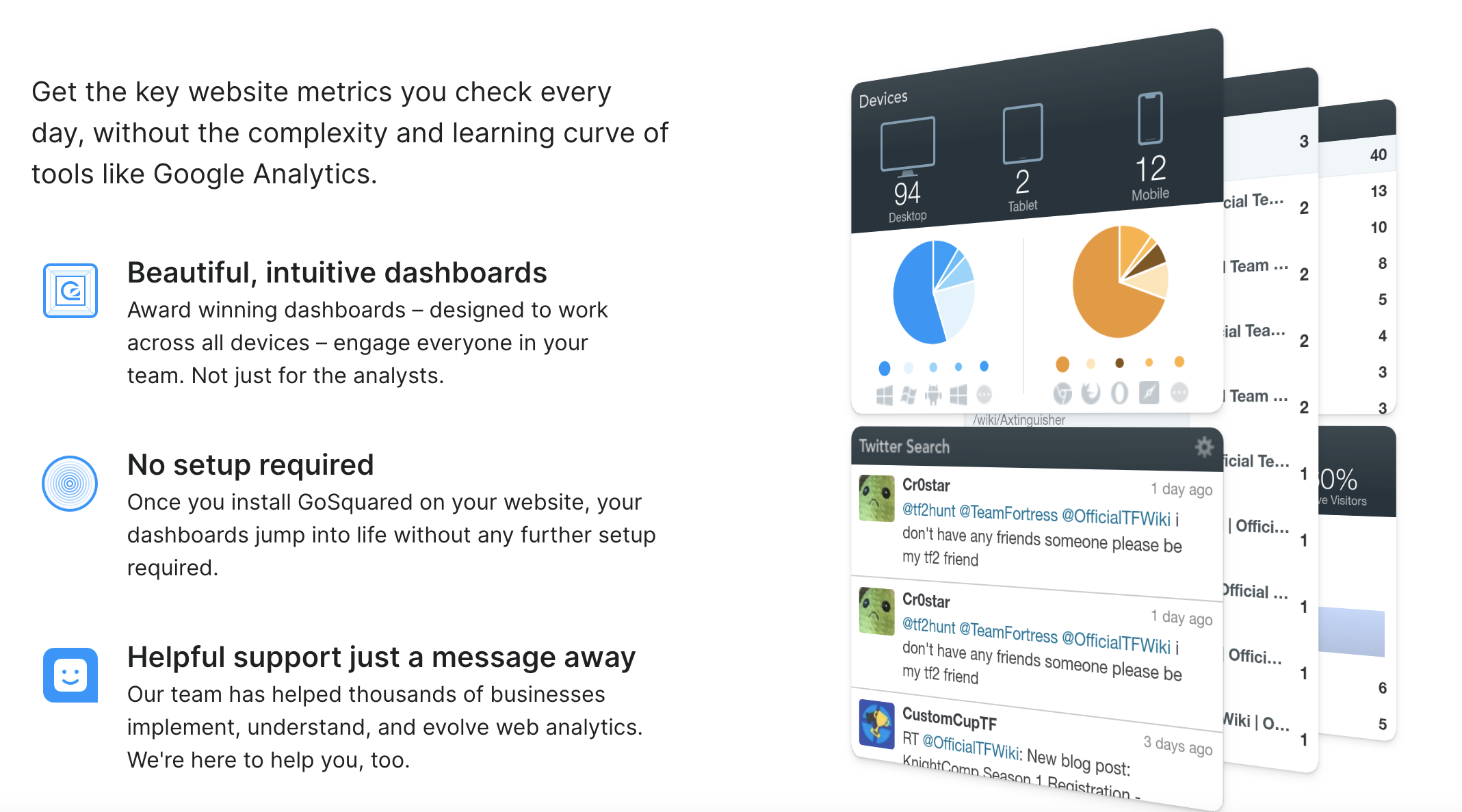Did you know that it costs five times more to acquire a new customer on average versus retain an existing customer?
Furthermore, selling to an existing customer has been found to have a typical success rate of 60%-70%, versus just 5%-20% for new customers.
So how do you retain your existing customers to ensure such success is more likely? The key lies in identifying your Net Promoter Score, which is also known as NPS for short. That’s because doing so will give you an honest answer about how your customers feel about your current service offerings, along with what can be improved.
For any business that is looking to supercharge their marketing efforts by ensuring their products, services or general offerings are truly aligned with their customers, conducting an NPS survey is a must.
New to all things Net Promoter Scores? Here is our ultimate guide to share everything you need to know on how to conduct NPS surveys and better still, how to extract the maximum value out of your efforts.
What Is NPS?
NPS stands for Net Promoter Score and is a type of measurement system that’s used for improving company performance. It aims to measure customer sentiment towards a company and can be used as a leading indicator of growth.
The information gathered from an NPS survey is designed to increase the number of customers who would actively recommend the company, by ascertaining any current areas of satisfaction and dissatisfaction.
Meaningful changes can then be made where necessary to improve on any weak spots within the company, based on honest customer feedback.
How Does NPS Work?
Net Promoter Score runs on a scale of -100 to 100, and is determined via an NPS survey which the customer completes at a specific interval in the CX journey. The higher the number, the more willing a customer is to promote a company’s products or services to others. The number can also be used to gauge the general satisfaction of customers as a whole, depending on the types of scores and accompanying feedback that are generated.
So why are Net Promoter Scores used? It is well known that word of mouth recommendations, coming from people you trust, are still the most valuable form of marketing. Customers from referrals are both more profitable and more loyal. We trust our friends and colleagues to give us good advice and we want to act on it.
Therefore, Net Promoter Scores help to get inside the minds of your customers, to see whether your company falls into this realm, or whether more work is needed to bridge the gap.
Read more: How to collect NPS customer feedback and share it with your team
NPS Question Examples
Let’s get specific here. As a business, the two most important question you can ask your customers are:
How likely are you to recommend us to a friend or colleague?
The answer is on a scale of 0 – 10 where 0 is ‘I would not recommend’, and 10 is ‘extremely likely’ that the customer would recommend you.
These types of questions can be followed by the second most important question which acts to gain further insight from the first question:
What is the most important reason for your score?
Naturally, some of the reasons may relate to the following:
- Great product?
- Great value?
- Great customer support?
- Maybe none of the above?
However, by not directly stating any of these reasons, and instead leaving this answer deliberately open ended means you can stop guessing which tick-box categories you think you might be good or bad at and let the customer tell you what they really think.
A customer who is actively promoting you is also actively growing your business. Inversely, somebody who wouldn’t recommend you is both likely to churn themselves and tell people about their bad experience, thus fueling negative growth. So in either scenario, you need to choose the NPS survey questions which are going to get to the crux of the matter.
How to calculate your NPS score – NPS calculator
Divide your survey responses into 3 types based on their score:

- Detractors 0 – 6
Customers who are dissatisfied. - Passives 7 – 8
Customers who are satisfied but not necessarily loyal. - Promoters 9 – 10
Customer who genuinely love your product.
Total up how many of each type you have, then your NPS score is simply the percentage of promoters taken away from the percentage of detractors.

This implies you could have a score anywhere between -100 and +100.
Although the qualitative feedback is often more interesting than a seemingly arbitrary score, the score is important so that you can plot sentiment trends over time. Also whatever scale you provide for people to score you on, NPS or otherwise, you can safely assume that any people who give you top marks feel strongly about liking you.
You don’t have to calculate all this by hand, there are a bunch of different tools available to help you do this:
- Delighted – no frills email NPS
- Promoter – email NPS with great followup and automation tools
- Wootric – in-app NPS
- Satmetrix – the founders of the NPS system
What Is A Good Net Promoter Score?
As noted, Net Promoter Scores run on a scale of -100 to 100. Technically, any NPS score above 0 is good, seen as this falls between the lowest and highest scores.
However, it is generally considered that an NPS score of 20 and above is good, an NPS score of 50 is great, whereas any NPS score over 70 is excellent.
How To Get Survey Responses
We all know how tedious filling in customer satisfaction surveys can be. If you want somebody to respond, keep it short and simple.
- An NPS survey should never be longer than the 2 core questions.
- Keep the email clean and direct – less is more.
- Don’t clutter it with marketing and definitely don’t try and skew your results by offering incentives to reply.
We decided to include a short sentence to provide some context around the survey. It could also be an opportunity to reassure the customer that every response is read, reinforcing the idea that their feedback is genuinely important and of interest to your company.

The email subject line should also be short and personable, as it’s both easy to read and less likely to get truncated on mobile.
How To Find Survey Participants
To draw meaningful conclusions any survey needs a decent sample size. It’s hard to predict how many people will respond but most estimates tell you to expect a ~20% response rate.
We didn’t take any chances with the numbers and decided to survey every single paying customer.
If you’re truly interested in how your brand is perceived, it’s best to avoid tying NPS to any particular action. The experts at Promoter insist that in-app NPS is a bad idea. Popups are annoying and the sentiment a customer feels at that particular point in time is most likely tied to their current in-app action, not to your brand overall.
Getting this right can be tricky. Ask yourself a few questions:
- Do you want to survey at the point of purchase or maybe a month after?
- How do you stop sending surveys to a customer when they cancel? – spamming ex-customers will only annoy them.
- How do you make sure you’re not sending a survey that will get lost amongst 5 other transactional emails they just received for signing up and making a purchase?
The more data you have on your customers the easier these decisions become and the easier it is to be smart with automation.
Internally we use our own app, People CRM, to define the type of customer that we want to survey, and a time window for when we want the survey to be sent. Our Smart Groups feature allows you to combine as many filters as you like to group users with similar attributes. When a customer matches the filters, they automatically get added to the group, which triggers a Zap to push them to Promoter.io and they get sent a survey. Simple.
Don’t send all your surveys at once, otherwise, you will only get a small snapshot of customer sentiment during that time window. Instead, send surveys on a rolling basis for each of your customers (e.g. 30 days after they purchased), so that every day you get a constant stream of feedback and don’t get bombarded all at once.
This also makes following up with your responders much more manageable.
NPS Survey Follow-Up
Any customer that takes the time to respond deserves a personal response. If nothing else, just to say thanks for taking the time to reply, but it’s also a great opportunity to start gathering more targeted feedback.
An NPS response is the start of the conversation, not the end.
The most obvious follow-up is to ask them to clarify the reasons for their score.
If they didn’t leave a comment with their initial response a customer is unlikely to respond well to a list of detailed questions. Ask them a single direct question like:
What is your #1 problem that GoSquared isn’t solving right now?
It’s important to tailor your follow up depending on the NPS type.
Responding To Promoters
Promoters are by far the easiest people to get back to. Understanding what delights your customers is just as important as learning where you need to improve. So again if a promoter didn’t initially leave a comment, ask them for clarification.
A great way to keep a promoter is to over-deliver and say thanks by offering them a freebie. A free t-shirt is a nice surprise and a great way to encourage engagement. It gives them a reason to reply to confirm they want one with the added bonus that by wearing your t-shirt the customer has literally become a promoter of your brand.
Encourage promoters who have left a comment to share the love. Make this easy by providing some action for them to take, give them a link to Tweet you. Ask them to leave a review somewhere public like G2 Crowd or perhaps just ask them for a quote for your marketing site. Maybe you value their technical feedback, then ask them to become a beta tester. We find we get the best response when we only ask a customer to do one thing.
How to Handle Passives
Generally speaking a passive is already a fairly satisfied customer. However, you could be doing much more to turn them into a loyal customer. In most cases, you just need to maximise the value they’re getting from your product to give them more reasons to stick around.
- Perhaps they’re only making use of half of the available features.
- Perhaps there is some low hanging fruit you could implement that would make their life much easier.
- Perhaps they’re on the wrong pricing plan and would benefit from an annual plan discount.
You don’t need to hard-sell to passives because they’re already paying. It’s just about doing the small extras that re-engage and remind them of why they signed up in the first place.
Turning NPS Detractors Into Promoters
When my Macbook screen inexplicably failed, my lasting memory is not that Apple’s build quality had let me down. The story I always tell is how impressed I was that they replaced it the same afternoon, completely free of charge. The trick is that even if something does go horribly wrong, the takeaway for the customer should always be how good the solution to the problem was, not the fact that a problem arose in the first place.
The first step is to make sure that each customer gets a sincere and personalised response. Not only does this reinforce the point that you actually listen and care, but it’s also an opportunity to win them over by offering more value from the product. Coach them through a feature they’re struggling with, prioritise feature requests and file proper bug reports. Following up with them when they’re patched/implemented is a great way to delight people.
Be transparent when things go wrong, customers are much more likely to be understanding when they’re kept in the loop. Make your status page easy to find, manage expectations to avoid disappointments and be honest about your own limitations. There’s nothing worse than a customer who harbours resentment towards you for overselling and coming up short.
Realistically you can’t win over every detractor and some degree of churn is inevitable, however when somebody does eventually churn, make sure they always leave on a high.
How To Use NPS Survey Feedback
Putting NPS in context requires you to combine NPS with all of your other user information. People CRM makes it obvious how you should be directing resources.
Trends emerge, perhaps all your promoters share common attributes. Are they from the same country, sector, company size etc? You can easily discover exactly which demographic you resonate with and who your ideal customer is.
This can all be very time consuming so we use Smart Groups to automate when to send surveys, when to follow up and how to follow up:
- Notify your support team to engage with a detractor before they churn.
- Instantly notify your sales teams to target new customers who fit a promoter profile.
- Get your dev team to prioritise feature requests from your biggest fans.
Learn More About Your Customers With GoSquared
Alongside Net Promoter Scores, it’s essential that every business understands its audience demographic. One such way to find out is through the GoSquared Analytics dashboard.
Providing you with over 100 individual features, you’ll receive real-time metrics about your website and most importantly your users. Use the information GoSquared provides to make meaningful changes to your marketing strategy, to ensure higher conversions across your products and services.
Access your free GoSquared trial today to get started. Alternatively, if you have any questions about NPS scores or GoSquared in general, you can contact us at any time.





